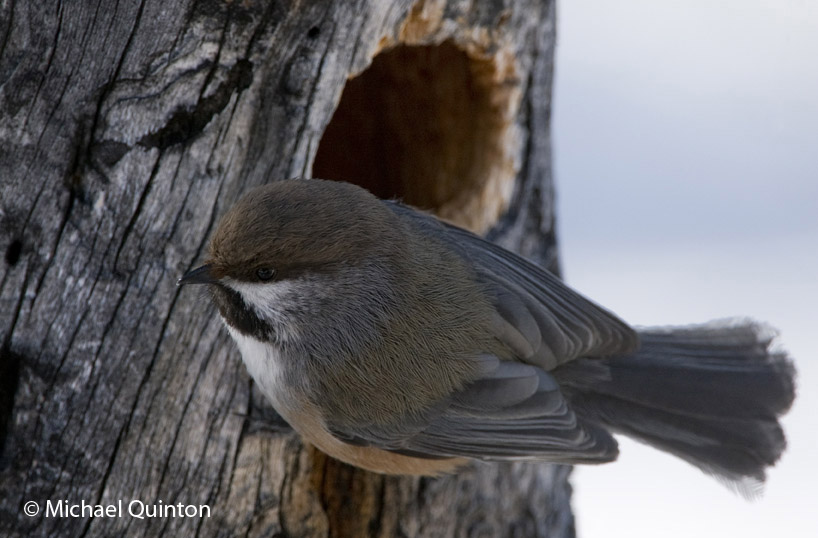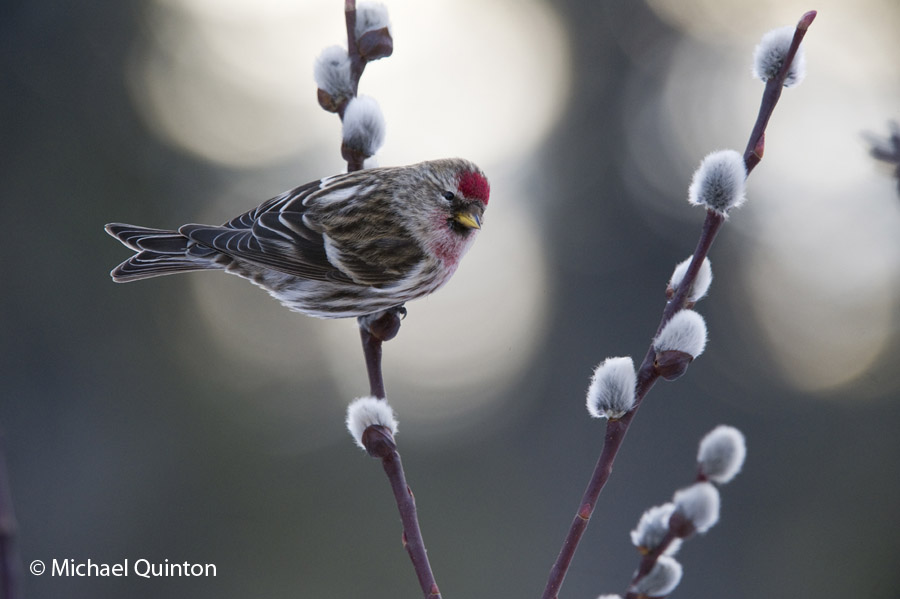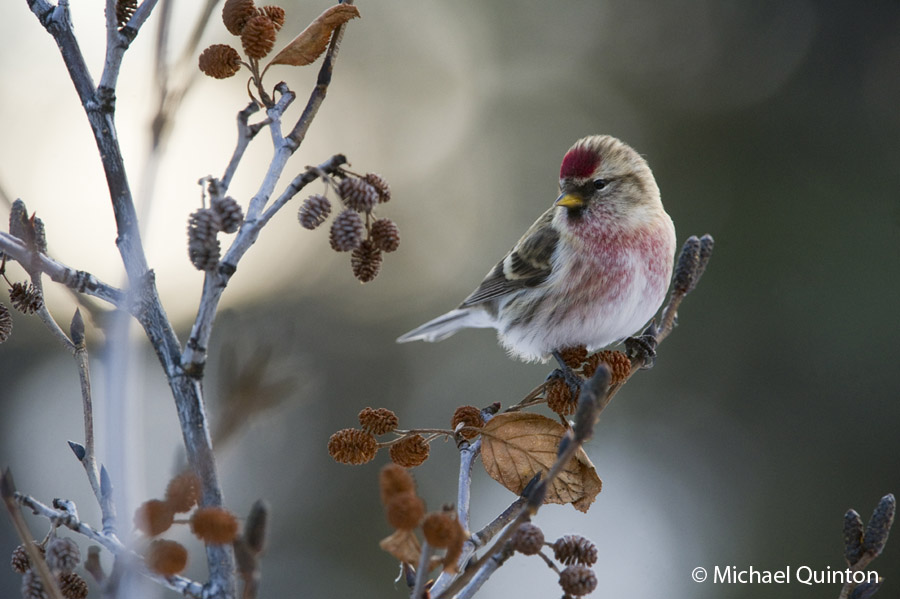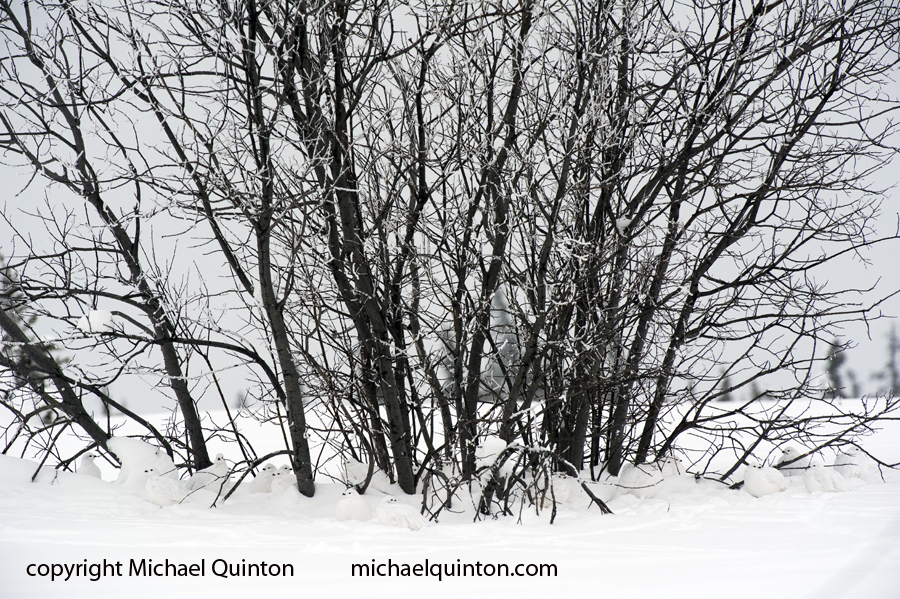Yesterday I climbed a ladder twenty feet up to a natural hole in a decaying poplar within the boreal owl territory. I had found the male inside the cavity once, so I had always thought it was a likely place for a nest. I took a quick look inside the cavity with flashlight and mirror but there was nothing inside. A single gray, downy feather clung to the bark on the outside. The owl must have been spending some time there, I thought. When I looked around I was surprised to see the little boreal owl glaring at me from about ten feet away. It was clearly agitated that I was at the hole. A few minutes later as I photographed the owl from the ground, I suddenly heard the rapid calling of the male. But it wasn’t the owl I was photographing. There are two boreal owls here!
This morning just after six a. m. I returned to the owl territory. As I neared the poplar the cavity seemed to have vanished. Through binoculars I could see the female was at the cavity entrance peering out at me. What perfect camoflauge. It has been fifty one days since I first located the little male boreal owl. Well, it seems that all his persistant singing has finally paid off.
 Female boreal owl in cavity.
Female boreal owl in cavity.
 Female boreal owl peeks from her nesting snag to see who is there.
Female boreal owl peeks from her nesting snag to see who is there.








